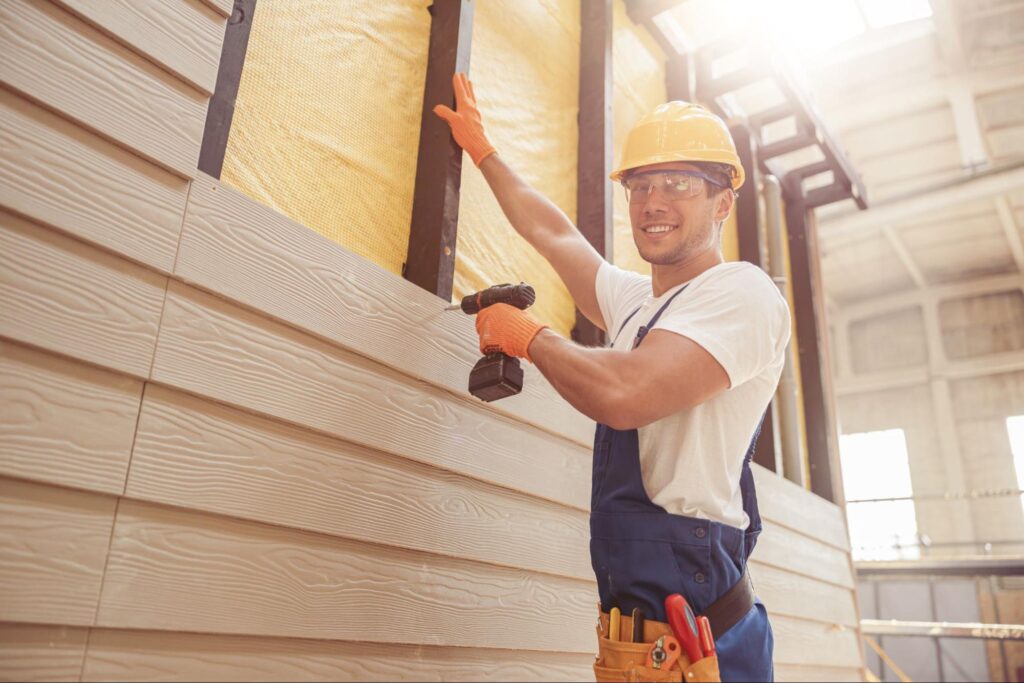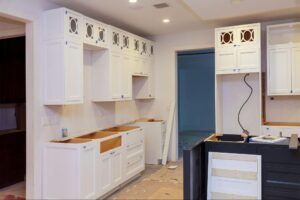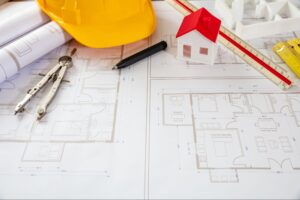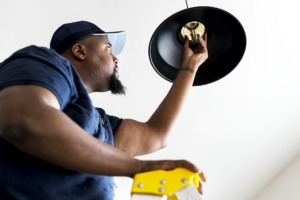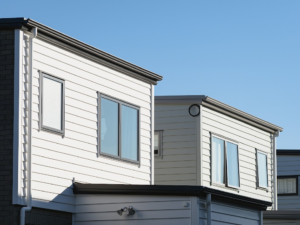Siding repair keeps a home looking great while protecting it from the elements, but not every issue calls for a full replacement. A few cracks, minor warping, or loose panels might only need a quick fix, saving time and money. On the other hand, severe damage or aging siding could mean a complete replacement is the better investment. The right choice depends on the extent of the problem, the siding material, and how long the repair will last. Weighing these factors carefully ensures the home stays strong, efficient, and visually appealing for years.
When Siding Repair is the Best Option
Siding repair works best when minor damage doesn’t affect the home’s structure. Small cracks, dents, or localized issues can often be fixed without replacing entire sections, making it a more budget-friendly option. Repairing siding also helps maintain the home’s original look, especially if matching new materials would be difficult. Choosing repairs over replacement extends the lifespan of existing siding while preventing minor issues from turning into major problems.
Fixing Small Cracks and Holes
Tiny cracks or holes in siding may seem insignificant, but they can allow moisture to seep in and cause further damage. A quick repair using caulk or patching materials seals these openings, preventing rot or mold from developing. Addressing these minor imperfections earlier helps maintain the siding’s durability and keeps the home’s exterior looking well-maintained.
Repairing Loose or Warped Panels
Harsh weather, temperature changes, and aging can cause siding panels to loosen or warp. Securing them back in place or using heat to reshape slightly warped vinyl panels can restore their original form. This simple fix prevents further damage and eliminates gaps where water or pests could enter.
Addressing Minor Water Damage
Siding exposed to excess moisture can develop minor water stains or slight swelling in isolated areas. Repairing the affected sections and improving drainage around the home stops the issue from spreading. Addressing the minor damages ensures the siding remains intact and prevents costly repairs in the future.
Preserving Historic or Specialty Siding
Homes with unique or historic siding materials often require repairs rather than complete replacement. Matching the original style and material can be difficult, making targeted fixes the best option. This approach maintains the home’s character while extending the lifespan of the existing siding.
Fixing Damage After Storms or Accidents
Strong winds, hail, and accidental impacts can cause dents or minor cracks in the siding. Small areas of damage can often be repaired without replacing large sections, keeping costs low. Restoring the affected spots earlier prevents further deterioration and maintains the home’s exterior protection.
When Siding Replacement Becomes Necessary
Siding replacement becomes the better choice when damage is too severe for repairs to be effective. Widespread deterioration, rotting panels, or persistent moisture issues can compromise the home’s protection and structural integrity. Older siding materials that no longer provide insulation or weather resistance may also need an upgrade. Investing in new siding improves energy efficiency, boosts curb appeal, and ensures long-term durability.
Extensive Rot or Mold Growth
Wood siding and other moisture-prone materials can develop rot or mold when exposed to prolonged damp conditions. Patching small areas may work temporarily, but extensive decay weakens the structure and spreads over time. Replacing the siding eliminates the source of damage and prevents recurring moisture problems.
Warping, Buckling, or Cracking Across Large Sections
Siding that shows signs of warping, buckling, or widespread cracks often indicates deeper structural issues. Fixing individual sections may not be enough if the material is already weakened. Complete replacement restores the home’s exterior strength and prevents additional repairs.
Frequent Repairs That Add Up in Cost
While repeatedly fixing damaged siding may seem cost-effective, frequent repairs can become expensive. Persistent issues with cracking, leaks, or fading often signal that the siding has reached the end of its lifespan. Replacing it once avoids ongoing repair costs and provides a lasting solution.
Energy Inefficiency and High Utility Bills
Old or damaged siding can lead to poor insulation, causing heat loss in winter and excessive heat absorption in summer. Higher energy bills often indicate that the home loses efficiency due to deteriorating exterior materials. Installing new siding improves insulation, lowers energy costs, and enhances indoor comfort.
Severe Storm or Impact Damage
Hailstorms, strong winds, and falling debris can cause significant damage, affecting multiple siding areas. Large dents, broken panels, or missing sections leave the home vulnerable to water intrusion and pests. Replacing the siding ensures complete protection and restores the home’s appearance.
Fading, Discoloration, and Aging Appearance
Siding that has faded or lost its protective coating no longer provides effective weather resistance. A dull or discolored exterior can hurt curb appeal and reduce property value. Upgrading to new siding refreshes the home’s look and offers modern durability against the elements.
Siding Repair vs. Replacement: Comparing the Costs
Cost plays a significant role in deciding between siding repair and complete replacement. Repairs typically require less labor and materials, making them a budget-friendly option for minor issues. Large-scale damage, persistent problems, or aging siding may justify the higher upfront replacement cost. Evaluating the expenses in both options helps homeowners make the best financial decision for long-term value:
Minor Siding Repairs ($100–$500)
Small cracks, holes, or loose panels can often be fixed for a few hundred dollars. Caulking, patching, and minor replacements require minimal labor and materials, keeping costs low. Choosing repairs for isolated damage helps homeowners extend the life of existing siding without a considerable investment.
Moderate Siding Repairs ($500–$1,500)
Sections with moderate damage, such as warping or water stains, may require more extensive work. Replacing individual boards or panels costs more but prevents further deterioration. Investing in moderate repairs can delay the need for complete replacement while maintaining the siding’s protective function.
Full Siding Replacement ($5,000–$15,000)
Widespread damage, aging materials, or severe structural issues make replacement necessary. The cost varies based on the type of siding, labor, and home size, with premium materials increasing the total. While expensive upfront, new siding improves energy efficiency, durability, and overall property value.
Long-Term Cost Considerations
Frequent repairs add up over time, sometimes making full replacement the more cost-effective. Old or damaged siding can increase energy bills by reducing insulation efficiency. Investing in high-quality replacement siding lowers maintenance costs and enhances long-term savings.
Siding Repair vs. Siding Replacement: Deciding Which is Best
Choosing between siding repair and replacement depends on the extent of the damage, budget, and long-term home maintenance goals. Small cracks, minor warping, or isolated issues often make repairs the better option, while widespread deterioration or aging materials may require complete replacement. Cost considerations, energy efficiency, and the overall condition of the home’s exterior also play a role in the decision. Evaluating key factors helps homeowners make an informed choice that balances immediate needs with long-term value:
Assess the Extent of the Damage
Inspecting the siding for cracks, rot, mold, or warping helps determine if repairs are enough. Localized damage in small areas can often be fixed without replacing entire sections. Large-scale deterioration, moisture infiltration, or structural weakening usually requires a complete replacement. Addressing the issue earlier prevents costly future repairs and extends the lifespan of the home’s exterior.
Consider the Age of the Siding
Older siding that has reached the end of its lifespan may not withstand repeated repairs. Most siding materials, including vinyl, wood, and fiber cement, have a recommended service life. If the material shows signs of widespread wear or has exceeded its expected durability, replacement becomes the better investment. New siding offers improved protection, better insulation, and modern curb appeal.
Compare the Costs of Repair vs. Replacement
Repairing minor issues saves money upfront, but frequent fixes can add up over time. A complete replacement requires a larger initial investment but eliminates the need for continuous maintenance. Evaluating the total cost of multiple repairs versus a one-time replacement helps homeowners make a financially smart decision. Choosing the right option ensures the best long-term value while keeping maintenance expenses manageable.
Factor in Energy Efficiency and Insulation
Damaged or outdated siding affects a home’s insulation and energy efficiency. Gaps, cracks, or thinning material can increase heating and cooling costs by allowing air to escape. Modern siding options provide better insulation, reducing energy consumption and improving indoor comfort. Upgrading to new siding can lead to long-term savings on utility bills while enhancing the home’s overall efficiency.
Consider Curb Appeal and Home Value
Worn or damaged siding can make a home look outdated and lower its market value. Repairs may work for minor aesthetic issues, but severely faded or warped siding may require a complete upgrade. Installing new siding enhances the exterior appearance, increasing resale value and overall attractiveness. Choosing an option that improves function and style ensures a well-maintained and visually appealing home.
Siding Repair vs. Siding Replacement: Making the Right Choice
Deciding between siding repair and siding replacement depends on the extent of the damage, long-term maintenance goals, and overall budget. Small repairs work well for minor issues, but widespread deterioration, rot, or aging materials often require a full replacement. Weighing costs, energy efficiency, and curb appeal help homeowners choose the best solution for their homes. Investing in the right option ensures lasting protection, improved insulation, and a well-maintained exterior.
For expert advice on siding repair and replacement, explore the Build All Construction Inc. blog for more insights to make the best decision for your home.

